It is not often you meet a World Champion so when ShootClay saw nineteen times World Champion, George Digweed MBE at this year’s CLA Gamefair we seized the opportunity to ask him if he would speak to ShootClay – luckily he’d heard of us. We caught up with him later this week while he was en route to watch some racing at glorious Goodwood. Here’s the conversation we had with George…
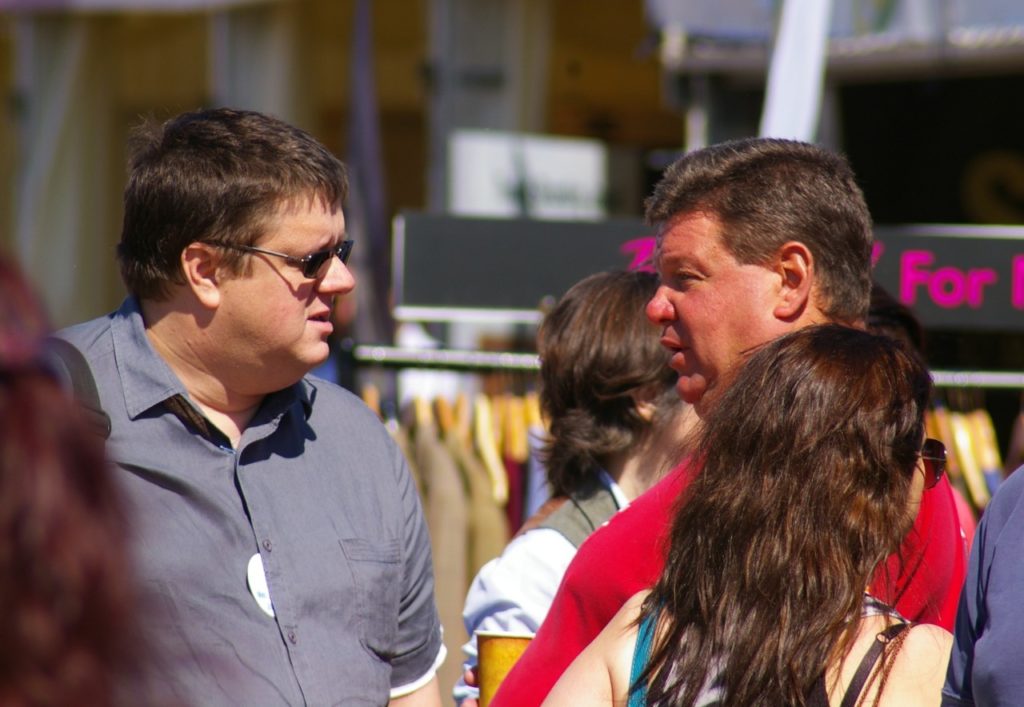 ShootClay : Thank You George for taking the time to answer some questions for ShootClay, I know that our readers are interested to find out about the leading names in Clay Shooting, so we’re excited to be able to talk to you.
ShootClay : Thank You George for taking the time to answer some questions for ShootClay, I know that our readers are interested to find out about the leading names in Clay Shooting, so we’re excited to be able to talk to you.
Firstly, reading your honour roll over the years is amazing, but it feels like 2011 has been an epic year, with wins in the UK, US, South Africa, Russia and New Zealand. Apart from the inevitable jet lag, how do you feel about your achievements this year?
George Digweed : Definitely, 2011 has been, in terms of achievement, my best year ever. I feel like I have shot the best I’ve ever shot, and the most consistent. We started shooting every Sunday in January which is quite unusual for me, in between the pheasants, and then I put the hard yards in for New Zealand which really paid off. We went to South Africa, where I shot well, a 196 and a 192. I came back and shot 100 straight in the World Cup event in France, and then went to the Triple Classic in the US where I won the World Sporting in San Antonio. I couldn’t have asked for anything more there. That was followed by Russia where I won by a large margin. It has been a great year!
At the end of that run, there was always going to be a time where I had put so much into it that the edge was going to come off my shooting. At the beginning of the season I would have taken any result, anywhere, but like all sport, I need to be able to peak at the right time. At the beginning of the year I had so many big shoots, I needed to peak then to perform at those events, but I just feel like I have come off form a little now.
SC : Is there one title that you feel got away from you this year? Was it the FITASC World Championship in Orville?
GD : Yes, for me the FITASC World Championship is the Formula One of Clay Pigeon Shooting and I’ve been very privileged to win it a number of times. It is a fantastic event and I went there (to Orville in France) with the sole intention of doing well. Having come just off the top of my form, I was aware that I was going to have to work really hard at it. I probably tried too hard in the first two days and although I didn’t shoot badly, I know I didn’t shoot as well as I could have done.
However, I could have gone and shot my absolute best, but I don’t think I’d have hit a 198. You have to be ‘on-fire’ at the time to do that, and off the back of the European Compak in St Petersburg he (Christophe Auvret) was right on form.
SC : Looking back over that list of titles and medals, which do you feel has been your most memorable victory?
GD : Personally, I’ve always said that the one I remember the most was the World FITASC Championship in 1992 when my father was very ill. I didn’t want to go, and I only booked on because he told me to. I ended up going over and winning it, but unfortunately losing my father in the meantime. It was my first ever World FITASC Championship and it was quite an emotional one really.
Performance wise, it would be last year in Italy at the World FITASC 2010. To do what I did in that heat, over four days, I almost surprised myself! (Note – George scored a 197 and won the championship by 2 shots from Ben Husthwaite)
SC : You travel a lot for your shooting, where has been your favourite venue?
GD: I’m lucky enough to shoot all over the UK and there are some lovely grounds abroad. I love South Africa and the Valley Gun Club, but I’ve also been very lucky over the years to meet lots of people and develop some fantastic friendships. Grounds don’t actually stand out, but good targets and great people create the atmosphere for a good day out.
SC : You’ve won at most disciplines (Sporting, Compak, FITASC) – which is your favourite to compete in, and why?
GD : I’ve been lucky enough to win in everything! I won the British Open Skeet with a record score and a World Cup Double Trap event as well! I’ve been able to win at lots of disciplines. Every win is a win, and it is always good to know you’ve gone out and beaten everyone there. Still, for me, FITASC is the Formula One of Clay Pigeon Shooting.
SC : We read that you were introduced to shooting in the field by your grandfather at the age of 12 – how would you recommend getting youngsters involved in the sport now? What do you think can be done to improve the number of people starting out in the sport?
GD : When I first started going shooting with my grandfather and the East Sussex Gun Club and Wildfowlers Association, the annual clay shoot was a whole day event, where we used to shoot just 25 targets! All of the local gun clubs, wildfowling associations and rough shoots used to turn up, about 150 people – and the whole day you would shoot just the 25. If you told someone now there would be an all-day clay shoot and you were going to shoot 25 targets they would think you were mad, but because we were only shooting 25 targets, it was affordable for people to come and try the sport.
The pace of life has changed so much now that people now have 100, 200 or 300 targets a day as the norm and that becomes cost prohibitive to a lot of people, and if you are trying to take your son or daughter shooting and pay for them as well it can soon become a really expensive day, it not only costs you £150 but it also costs £150 for your child as well.
So, I see the cost as being quite prohibitive, but I also think that people go into the sport wanting to shoot the best immediately. I think you have to learn the basics first. When I learnt, it was not at Clay Shoots but Rough Shooting and for the first year I was made to carry a .410, unloaded with no cartridges. I had to break it at the right times, if I crossed a fence I had to check it was unloaded and then check it again when I’d got over. I was taught the correct way of handling a gun. If you told someone that now, they’d be just as likely to hit you over the head with the stock!
I think it is mainly a financial thing than anything else because if you look at the largest growing classes at FITASC, or any other of the international events at the moment, it’s veterans. They are the people with the largest disposable income, and they are prepared to spend it doing what they enjoy the most.
SC : So, do you think we should be encouraging shoots to put on more cost-effective ways of getting youngsters involved?
GD : I’ll give you one example, I quite often go to Greenfields in Canterbury on a Sunday morning when they have competition shoots, they put on a ‘have a go’ stand which is advertised in all the local papers. Without question, the amount of families who turn up, having never shot before, is incredible. They make it relatively cheap, with an instructor on the stand, and they are actively encouraging people to join the sport. Those stands are ALWAYS log-jam busy, all day. So I think the opportunities are there and as an industry we have to look at ways and means of doing that.
SC : You’ve said in the past that you think Skeet is an excellent discipline for learning and practice to work on angles and concentration. Do you still practice yourself? Can you share your practice drills? How do you prepare for a competition?
GD : I don’t shoot much practice now unless I’ve been shooting rifles in the previous day. I’m actively looking after three game shoots, and working hard on a fourth. You don’t get time to do much practice! For example, last week I was out controlling foxes at night. We had a situation where 300 pheasants were lost over two nights between Thursday and Friday and I was up on Saturday night at 11.20pm dealing with those foxes! Then I was in the car going to the Gamefair at 4.40am the following morning. I’m sure that people think I stay in a hotel, win the shoot and that’s a normal day, the reality is I don’t get much chance to practice, I use the competitions as practice.
The only exception is if I have been focused on rifle shooting, I might go to a local club and shoot 75 skeet to get my timing back after the discipline of breathing and stillness with the rifle. Clay Shooting is about pulling the trigger while moving, so the two disciplines are very different for me.
SC : A lot of our readers will be interested in your set-up. What do you use and how is your equipment set up?
GD : Well – I use a Perazzi MX2000 Sporter, Gamebore White Gold cartridges and I use Pilla Hi-Def Glasses (Previously reviewed on ShootClay here).
My gun is 100% standard, full & full chokes, because I firmly believe if you can’t hit it with full chokes and a White Gold 7.5, then it can’t be killed! Last year, I asked Perazzi to make me a spare set of barrels because some FITASC targets were being set that were about 15-25ft away. Every target needs respect, but I felt that after shooting in Austria where I missed 3 or 4 of those and lost a shoot by 2 targets, that I was handicapping myself by having full choke. So Perazzi made me an exactly matched set of barrels, same weight etc. but with 3/8 & 5/8 chokes.
SC : Do you feel that gives you more chance at close range?
GD : Actually, at that range, I don’t think it makes that much difference, but psychologically if you walk onto the stand knowing you have three-eighths and five-eighths, you feel like you have more room to work with than you actually have.
SC : We’ve watched you shoot at the GameFair last Sunday and noticed a pause before calling ‘pull’. Was that for concentration or visualization? Do you have a pre-shot routine to make sure that you stay 100% focused?
GD : Well mainly on Sunday, I was waiting for the smoke from the flash-targets to clear! Usually, I try and keep my mind focused on what I need to do to break each target. If I am going well, I don’t think of anything. If you speak to any top sportsmen or women, they often cannot tell you HOW they do it, they are in the zone. If you need to worry too much, then you are often not in with a chance of competing!
SC : You’ve won almost everything, do you still have specific ambitions in Clay Shooting?
GD : I’ve always said “you are only as good as your last result”, and I owe it to myself and to everyone that has supported me throughout my life to keep going as long as I am able to and perform to the best of my abilities. I don’t ever want to get to a scenario where I am not able to compete at the top-level.
If I wasn’t able to compete at a high standard, then I’d still like to be involved in the sport, but maybe not in a competitive environment for a long period of time.
SC : And away from the sport , we know that you run a Sporting Agency. What is in the pipeline for the upcoming game season?
GD : We’re hopeful for a good Grouse season, although early reports are suggesting it is not as ‘bumper’ as some places are suggesting, but we’re hard at work making sure that the pheasants get through the initial stage of release which is a very vulnerable time for them. With predators, variables in temperature and disease as threats, stress can bring on all sorts of diseases in gamebirds. It is a case of constant monitoring and making sure they are in a completely hassle free, relaxed environment. That takes up a huge amount of time, I’m very lucky in that respect to have Kate (George’s wife) who does an excellent job in looking after the birds when they are young, whereas I am more involved in getting the birds into the drives and then flying them.
SC : A couple of ‘lighter’ points. A lot of the top shooters seem to have superstitions. Do you do anything that we should watch out for?
GD : I certainly do have 1 or 2 superstitions – but I’m keeping them between me and my gun!
SC : Finally, if you could choose your ideal shooting squad, dead or alive, who would you shoot with?
GD : That’s an interesting question… ummm… Percy Stanbury (of Stanbury Technique fame), Joe Wheater (1960’s British Open Sporting Champion – multiple times) & Michel Riboulet (late 1970’s multiple winner of the FITASC World Championships), but all in their prime, just so I could see how good they really were. When I was growing up, these were the three that achieved the most and everybody always compares good shooters with those people. It would have been great to see them in their prime.
SC : Once again, thank you for your time. We wish you much luck at the races today, and hope you have some winners!
GD : No problem. Thanks!


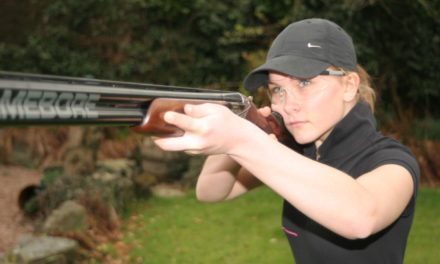
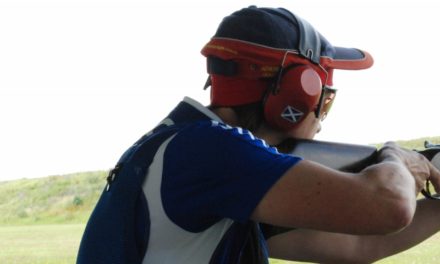
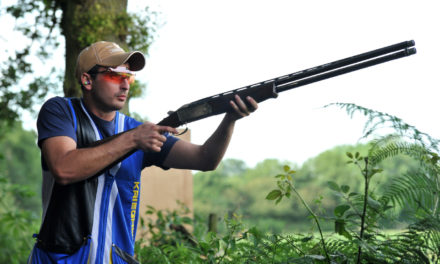
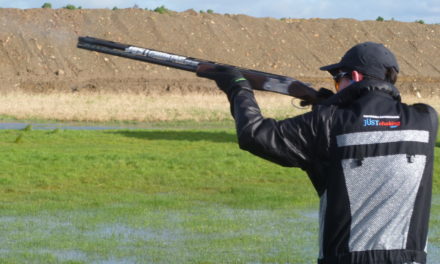
Great interview.
I’d have enjoyed questions such as how has his technique changed (or not) over the years. What are the most common shooting errors he sees in his students.? What should beginning or intermediate shooters focus on?
Found his response to using a preshot routine interesting.
Good ideas – I hope we’ll be able to speak to George again – so we’ll keep those in mind. Keep watching for more interviews from top shooters. Thanks for commenting.
Excellent interview, George is a great champion, no flannel, no woffle he just tells it how he sees it.
Imagine trying that interview with Sebastian Vettell, or any other World Champion? You would have had their PA recording it to make sure George was PC and that the interviewer asked the correct questions. I have always found George very honest and down to Earth. Long may he reign.
Thanks Salopian – this was our first encounter with George – and he was generous with his time. Very refreshing.
a True champion !